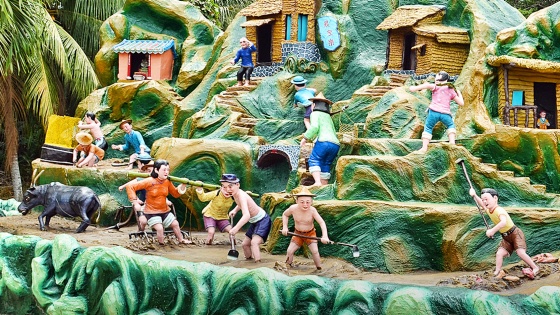Haw Par Villa
Haw Par Villa
Blog Article

Overview
Haw Par Villa, also referred to as Tiger Balm Gardens, is an legendary concept park situated in Singapore. This distinctive attraction presents people a glimpse into Chinese mythology and folklore via its amazing and intricate statues, dioramas, and exhibits. Let's acquire a more in-depth think about the important aspects of the fascinating spot.
Record:
Haw Par Villa was initially created by Aw Boon Haw, the magnate at the rear of the well-known Tiger Balm ointment. The park opened its doors in 1937 as a method to both equally entertain and teach people about standard Chinese values, historical past, and beliefs. Through the years, it's gone through various renovations but has managed to keep its primary charm.
Mythological Figures:
Among the major highlights of Haw Par Villa is its wide selection of statues depicting people from Chinese mythology and legends. Readers will come upon figures like Journey to the West's Solar Wukong (the Monkey King), 8 Immortals from Daoism, and important deities such as Guanyin (Goddess of Mercy) and Buddha Shakyamuni.
Theme Parks within Haw Par Villa:
Within Haw Par Villa alone are many distinctive parts or sections:
10 Courts of Hell: Probably The most intriguing portions of Haw Par Villa is Discovering "The Ten Courts of Hell." Here people can witness graphic scenes depicting punishments for several sins based upon classic Chinese beliefs about afterlife retributions.
Taoist-Mythology Sculptures: This spot showcases breathtaking sculptures depicting tales from historic Taoist myths. These lively artworks bring to life tales that were passed down via generations in vivid element.
Yard Sceneries: Over and above mythological sculptures lie serene gardens filled with picturesque landscapes adorned with stunning bouquets and vegetation—a perfect Place for guests to rest amidst character's elegance or enjoy an informal stroll.
Teochew Opera Centre: The Teochew Opera Centre is a traditional theater environment that here consistently hosts performances from the Teochew opera, a substantial sort of Chinese musical drama with distinct regional traits in its costumes, tunes, and storytelling.
Cultural Significance:
Haw Par Villa holds enormous cultural importance as it provides a chance to take a look at different areas of Chinese culture, folklore, and religious beliefs. It serves as both equally an open up-air museum as well as a spot for communal things to do like festivals or educational packages enabling readers to gain insights into historical Chinese traditions.
On top of that, the park's original intention was to educate website visitors about ethical values as a result of vivid depictions of heaven and hell – gratifying virtue and condemning vices. Consequently Haw Par Villa functions as not only an amusement park but additionally a moral tutorial training important ethical concepts from common Chinese philosophy.
Contemporary Relevance:
In spite of currently being designed many years back, Haw Par Villa proceeds to catch the attention of locals and vacationers alike as a result of its uniqueness and timeless charm. The park has managed to blend tradition with modern factors by organizing activities including art exhibitions, lantern festivals in the course of mid-autumn celebrations showcasing the fusion among modern day aesthetics and vintage themes connected with the villa.
In recent times, there happen to be efforts by authorities to refurbish parts of the attraction while making sure its historic authenticity. This ongoing upkeep ensures that Haw Par Villa remains obtainable for generations to come back although preserving its wealthy heritage value.
Summary:
Haw Par Villa stands out between Singapore's points of interest for its immersive expertise into mythical realms as a result of intricately-intended sculptures depicting deities, legends, morality tales and punishments in Taoist mythology-motivated gardenscapes - all inside a reflective natural environment emphasizing daily life lessons dependant on compassion demonstrated in the direction of Other people as it conveys ancient knowledge guided by ethical concepts conducive for self-enhancement located amidst attractive scenic landscapes which makes it acceptable equally for cultural exploration enthusiasts serious about China's extensive mythology/history/backgrounds/legends concurrently(proporotinately with due rverence toward central theme of symbolizing conventional Chinese lifestyle and beliefs).